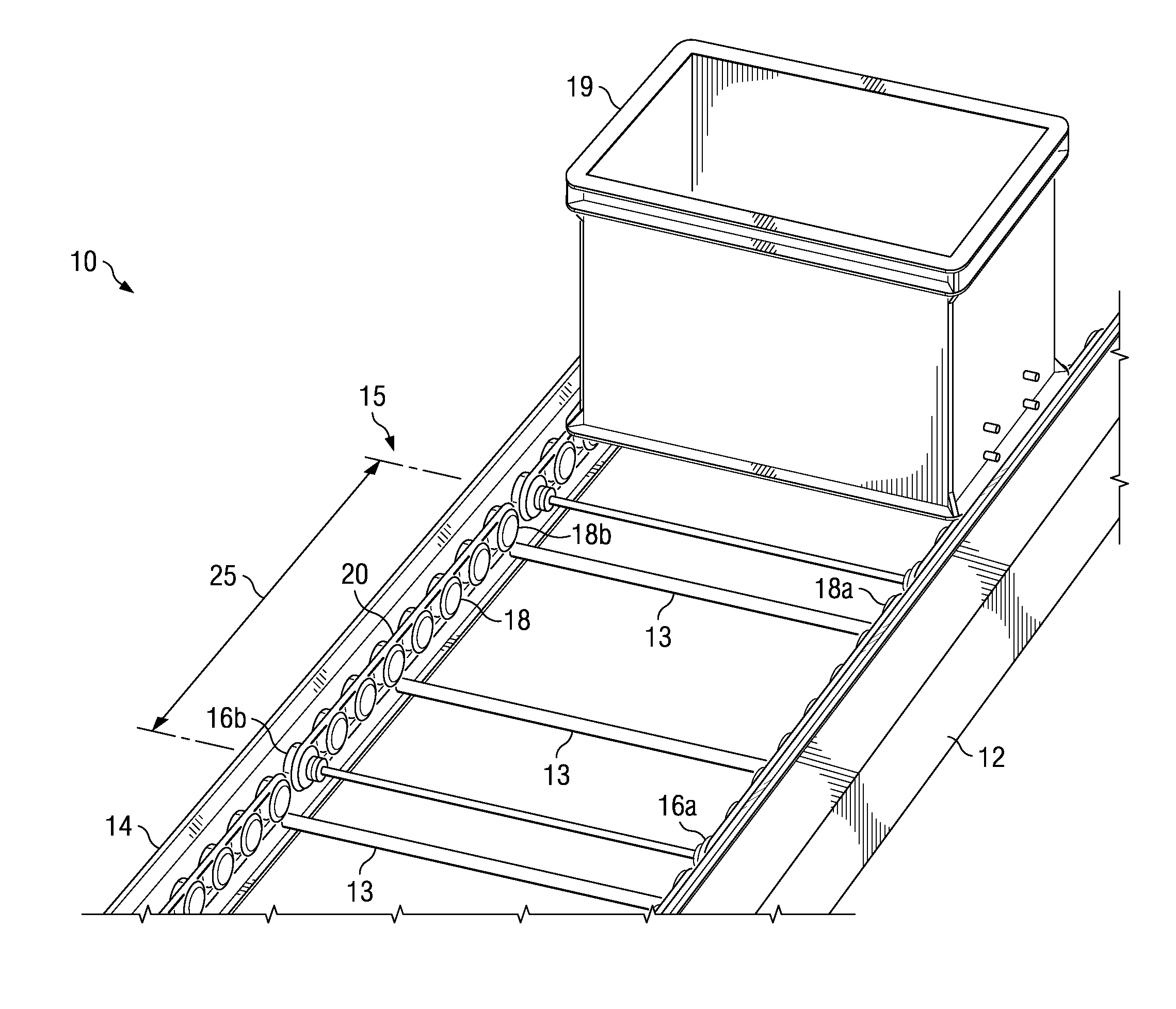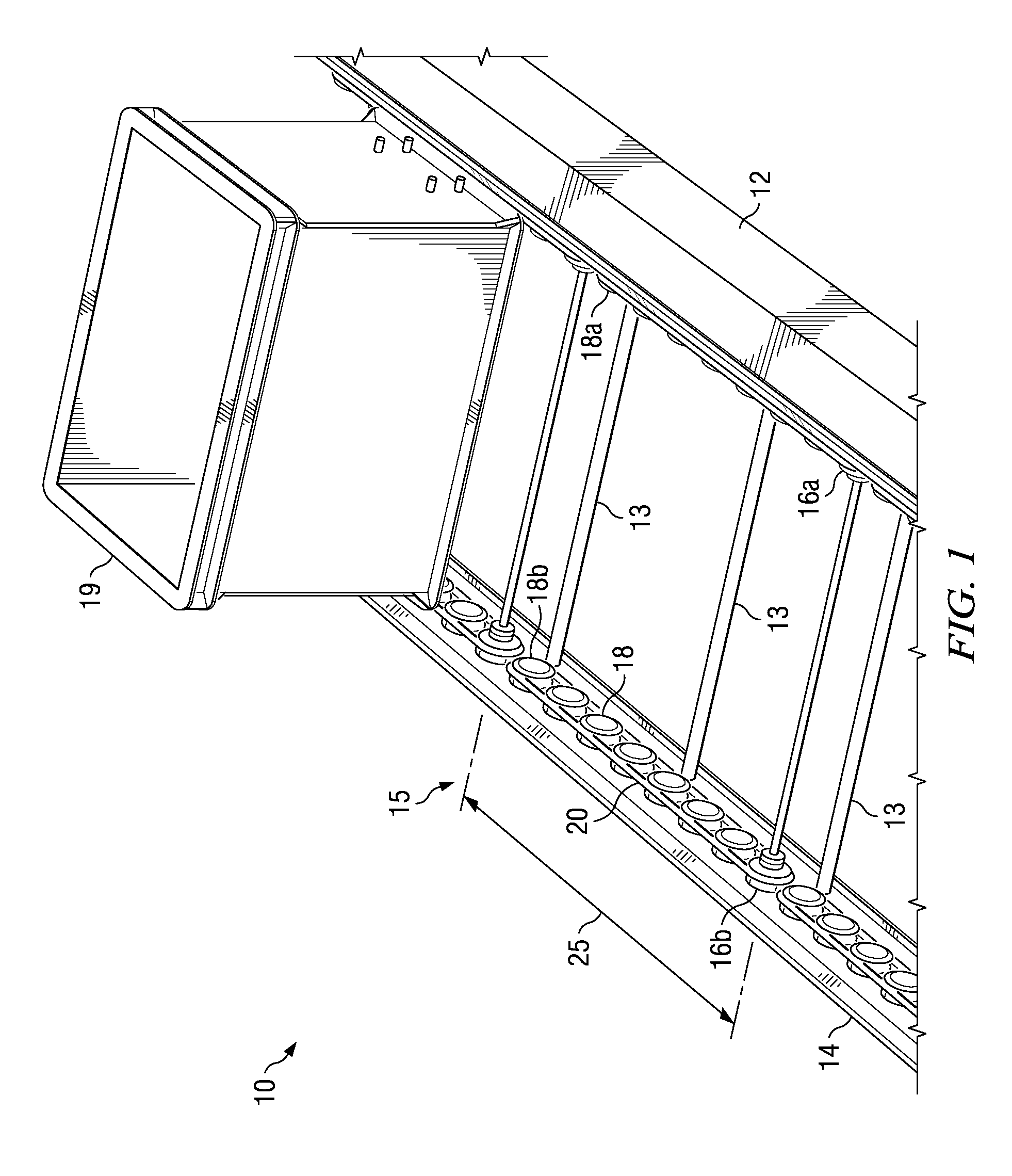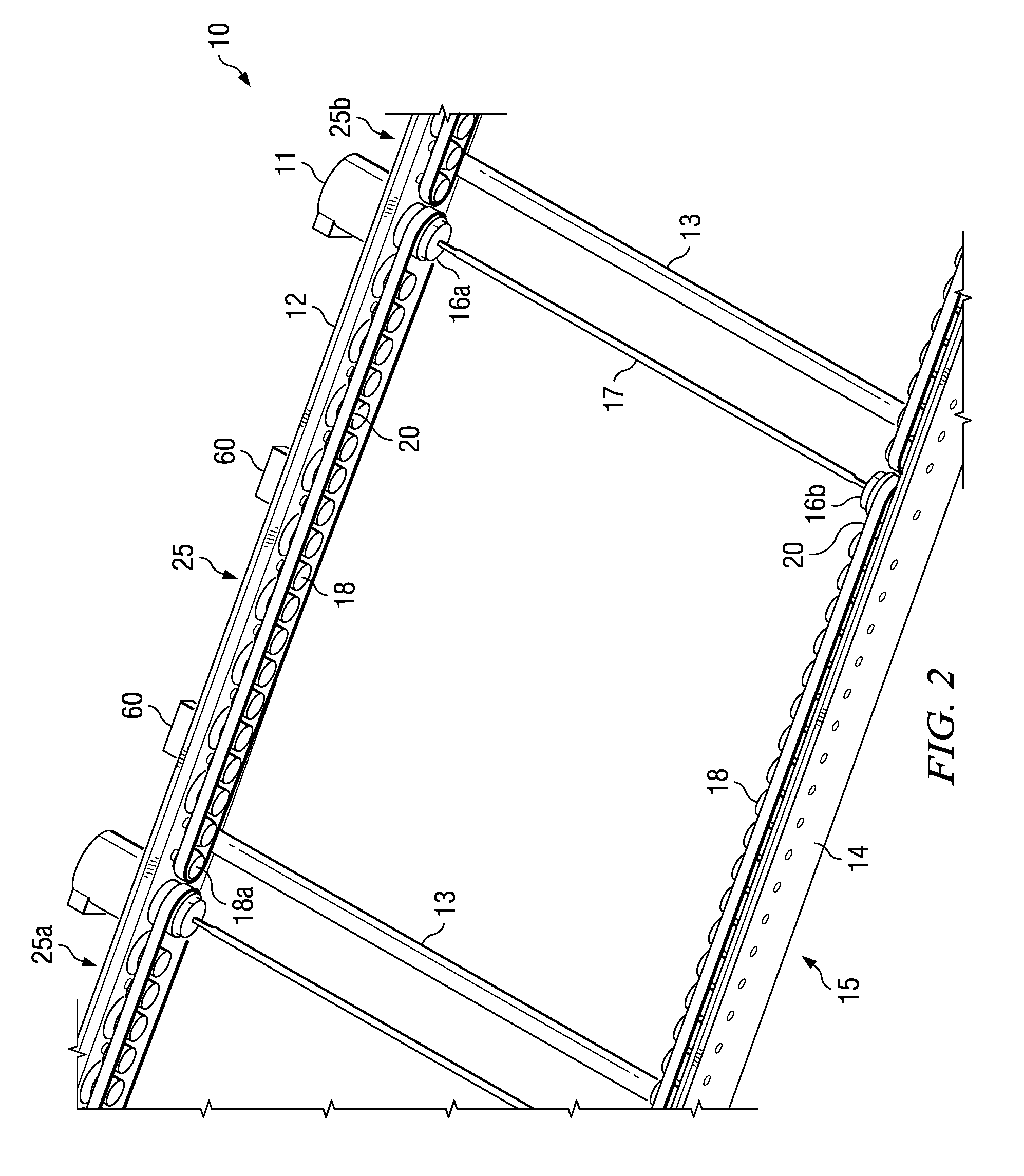Clean, high density, soft-accumulating conveyor
a conveyor and high density technology, applied in the direction of mechanical conveyors, rolling conveyors, instruments, etc., can solve problems such as frictional particulates
- Summary
- Abstract
- Description
- Claims
- Application Information
AI Technical Summary
Benefits of technology
Problems solved by technology
Method used
Image
Examples
Embodiment Construction
[0029]Referring to FIGS. 1 and 2, a belt-driven conveying system (“conveyor”) will be described. The conveyor 10 includes a multiplicity of interconnected conveyor modules 15 having at least one belt-driven conveyor segment 25. The belt segments 25 and conveyor modules 15 can be structured and arranged in a myriad of patterns to satisfy local transportation and plant requirements. Each conveyor module 15 is internally segmented into unit length zones or belt segments 25, whose size (length and width) is determined by the dimensions of the work piece or by the object carrying a work piece 19. Indeed, the length of a conveyor module 15 is an integer multiplier of the length of each belt segment 25 within that module 15.
[0030]For example, if the dimension of the work piece or object carrying the work piece 19 is 0.5 meters in length and the conveyor module 15 is approximately two meters in length, a total of four autonomous, belt-driven conveyor segments 25, which are each slightly lar...
PUM
 Login to View More
Login to View More Abstract
Description
Claims
Application Information
 Login to View More
Login to View More - R&D
- Intellectual Property
- Life Sciences
- Materials
- Tech Scout
- Unparalleled Data Quality
- Higher Quality Content
- 60% Fewer Hallucinations
Browse by: Latest US Patents, China's latest patents, Technical Efficacy Thesaurus, Application Domain, Technology Topic, Popular Technical Reports.
© 2025 PatSnap. All rights reserved.Legal|Privacy policy|Modern Slavery Act Transparency Statement|Sitemap|About US| Contact US: help@patsnap.com



